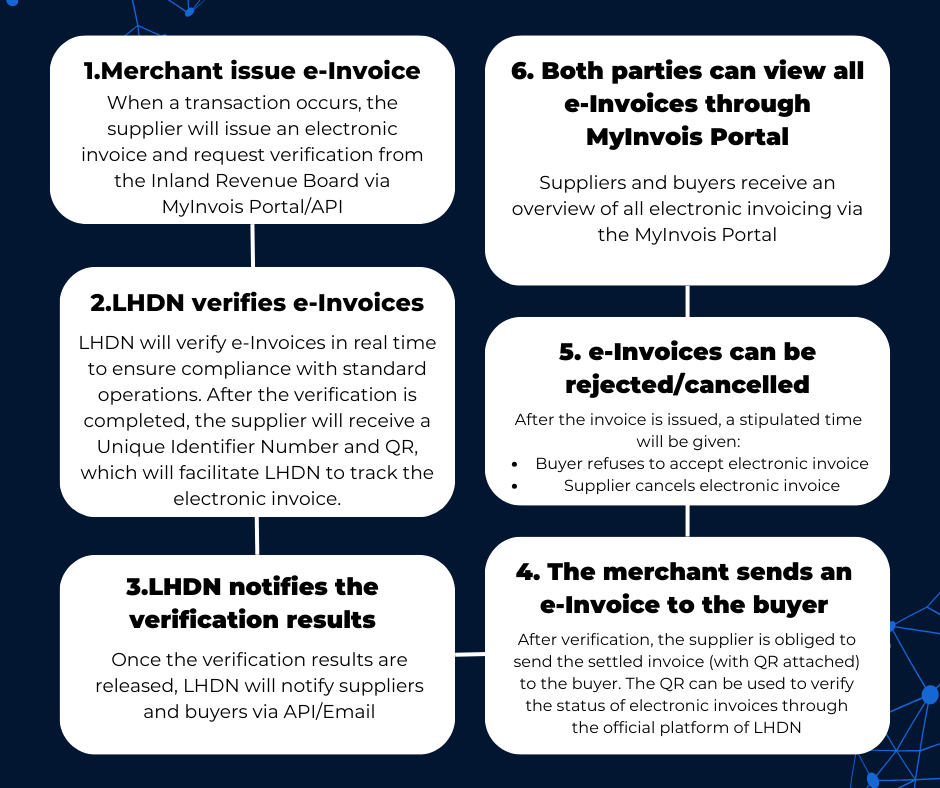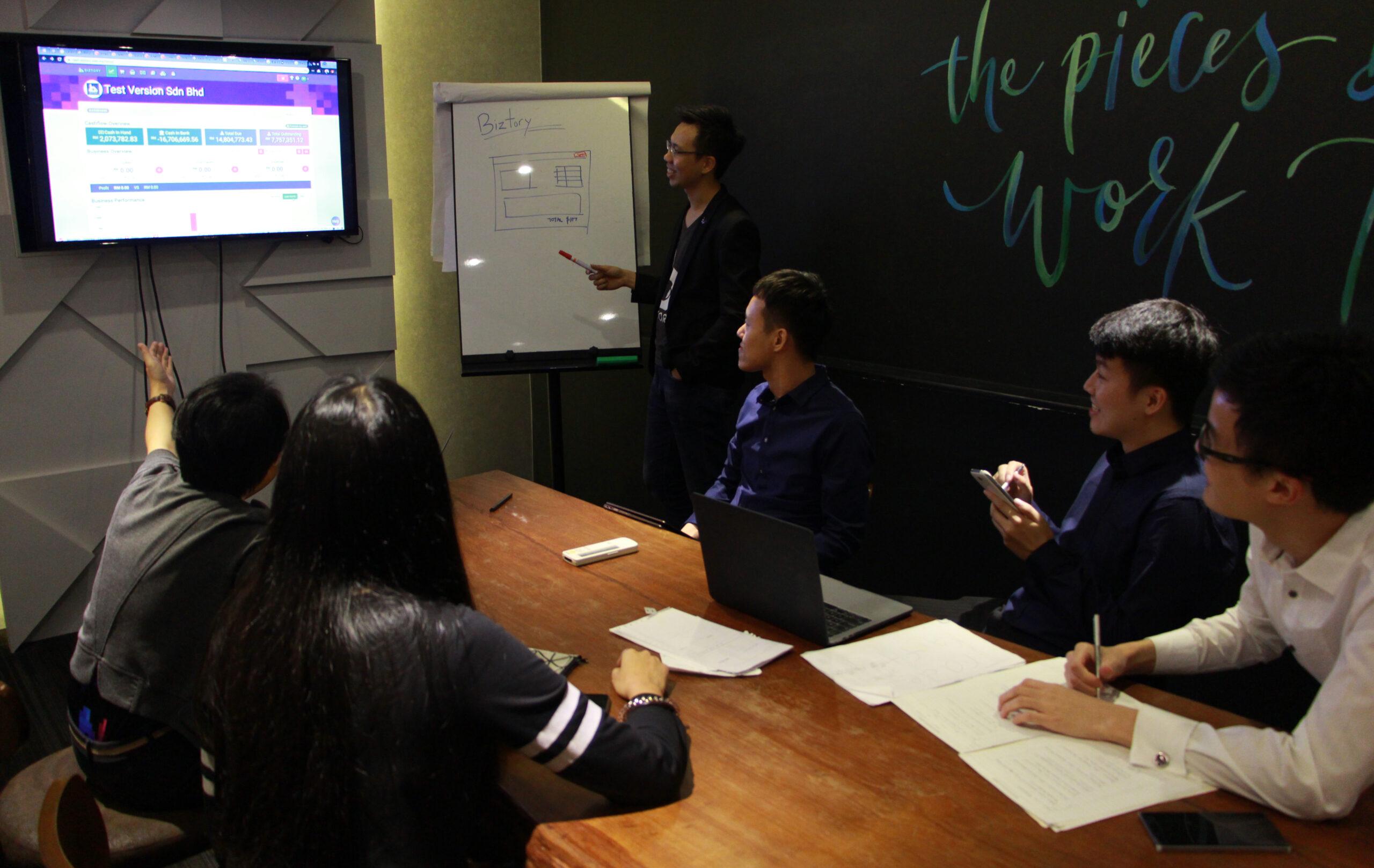Contents
- What Is e-Invoice?
- In short,
- Frequent Ask Question
- When will e-Invoicing be officially implemented?
- Is my industry exempt?
- Does small business also entitled to do e-Invoicing?
- Isn’t e-Invoice just the Invoice of PDF file?
- Where do I start implementing e-Invoice?
- What is the difference between MyInvois and API? Which one is more suitable for me?
- Is e-Invoice also required for foreign trade?
- My clients don't need to enforce e-Invoice yet but I do, what should I do?
- Can the sent e-Invoice still be changed?
- How Biztory Helps You With e-Invoicing?
What Is e-Invoice?

In short,
LHDN Malaysia will implement an electronic invoice (e-Invoice) policy in 2024. The first batch of companies that need to adopt this system are companies with an annual turnover of more than RM100 million!
The purpose of this policy is not only to improve corporate efficiency, but also to reduce tax evasion. The government is currently actively studying relevant information on the implementation of e-invoice in various countries to ensure the smooth implementation of the policy.

Frequent Ask Question
When will e-Invoicing be officially implemented?
According to Budget 2024, the Prime Minister proposed that the first phase of the mandatory implementation of electronic invoices will start in August 2024, and the goal is to fully implement the electronic invoice policy in July 2025! (18 months earlier than previously expected!)
Timeline from LHDN announcement:
| Object | Implementation date | |
| First Stage | Companies with a turnover of RM100 million and above | 01/08/2024 |
| Second Stage | Companies with a turnover of RM25 million and above | 01/01/2025 |
| Third Stage | All remaining companies | 01/07/2025 |
Is my industry exempt?
Currently, all industries are required to implement e-Invoice, and no industry is exempted.
Does small business also entitled to do e-Invoicing?
LHDN is expected to fully implement e-Invoice in July 2025. This means that by then, all industries and businesses of all sizes will need to adopt e-Invoice.
Isn’t e-Invoice just the Invoice of PDF file?
No, e-Invoice means that invoices are prepared and issued electronically and can generate documents that can be automatically interpreted by the LHDN system.
- Eligible documents include: XML, JSON
- Ineligible documents include: PDF, DOC, JPG
Where do I start implementing e-Invoice?
LHDN provides two electronic invoice transmission mechanisms:
- MyInvois web page hosted by LHDN
- Application programming interface (API)
MyInvois
The MyInvois platform is an e-Invoice system specially launched by LHDN for taxpayers. It allows all taxpayers to manually prepare individual invoices through this platform or upload a small number of invoices for multiple transactions for LHDN certification.
MyInvois is only suitable for taxpayers with small billing volume. Invoices certified by it can be found and downloaded by merchants and buyers in their respective tax accounts. LHDN also provides multiple formats for taxpayers to download, including:
- XML/JSON, ability to download single invoice or multiple invoices
- Metadata
- CSV
- Grid
API
The API interface can link the merchant’s own billing system to LHDN, allowing merchants to issue orders through their own billing system and then upload them to LHDN for review and certification.
The API interface allows merchants to upload a large number of invoices at one time, which is suitable for companies with large transaction volumes. At the same time, the fees required are also high. Currently there are 3 API interface methods:
- Directly link the merchant’s accounting system such as Biztory with MyInvois
- By Peppol Technology Supplier
- Via non-Peppol technology suppliers
What is the difference between MyInvois and API? Which one is more suitable for me?
| MyInvois | API | |
| Billing Method |
|
It is necessary to upload documents through the API interface after placing an order. |
| Invoice Sharing | Electronic invoices can be downloaded in PDF, XML, JSON, CSV and other formats | Via QR code in e-Invoice |
| Cost | Low | High |
| Features | Allow merchants and buyers to find and download the e-Invoice through their own tax accounts | You can continue to use the company’s existing accounting system to issue invoices and upload them through the API interface for LHDN review and certification in one go. |
| Applicable |
|
|
Is e-Invoice also required for foreign trade?
Yes, whether it is a domestic transaction or a cross-border transaction, e-Invoice is required. Cross-border transactions include import and export activities.
My clients don't need to enforce e-Invoice yet but I do, what should I do?
Can the sent e-Invoice still be changed?
If a problem occurs after the e-invoice is reported to LHDN, the merchant cannot make changes and can only cancel and issue a new e-Invoice within 72 hours.
If it exceeds 72 hours, you need to issue a new e-Invoice (such as debit note, credit note, refund note e-Invoice) to make adjustments and issue the latest complete e-Invoice.
How Biztory Helps You With e-Invoicing?
One way to comply with e-invoicing regulations is to adopt accounting software that is compatible with the Malaysian Revenue Department (LHDN) API (Application Programming Interface) guidelines. Specifically, businesses can choose accounting software solutions such as Biztory Cloud Accounting Software.
With this approach, businesses can streamline their electronic invoice submission process. Once an invoice is issued through Biztory, users will get a convenient and straightforward option. Just click the designated button and the invoice will be automatically synced to the government’s e-Invoicing platform. This approach saves businesses time and effort and ensures that invoices are submitted to the LHDN in an efficient and real-time manner.
Before choosing an e-Invoice submission method, businesses need to carefully assess their needs and capabilities. Those with appropriate accounting software, such as Biztory, can leverage integrations with government platforms to ensure timely compliance with mandatory regulations for e-Invoicing. On the other hand, businesses without compatible software can opt for manual submission via the MyInvois Portal to ensure that they actually fulfill their obligation to submit electronic invoices to the National Revenue Board (IRB). However, it is important to realize that any manual errors can result in hefty fines.
For manual submission of e-Invoices, up to 53 pieces of information need to be filled in. These fields are required by the Inland Revenue Department of Malaysia (LHDN) to ensure that all e-Invoices are properly validated. If any errors are found during the verification process, the e-invoice will be rejected with an error message. The supplier will then need to correct the error and resubmit the invoice electronically.
As the leading accounting software in Malaysia, Biztory Accounting Software is the best choice and is fully compliant with SST and e-invoicing regulations. Register for a free trial account now to get an one-on-one Online Demo and Business Consultation opportunity. Improve business efficiency and ensure seamless compliance with Malaysia’s e-invoicing standards. Don’t miss this opportunity to take your business to new heights!
